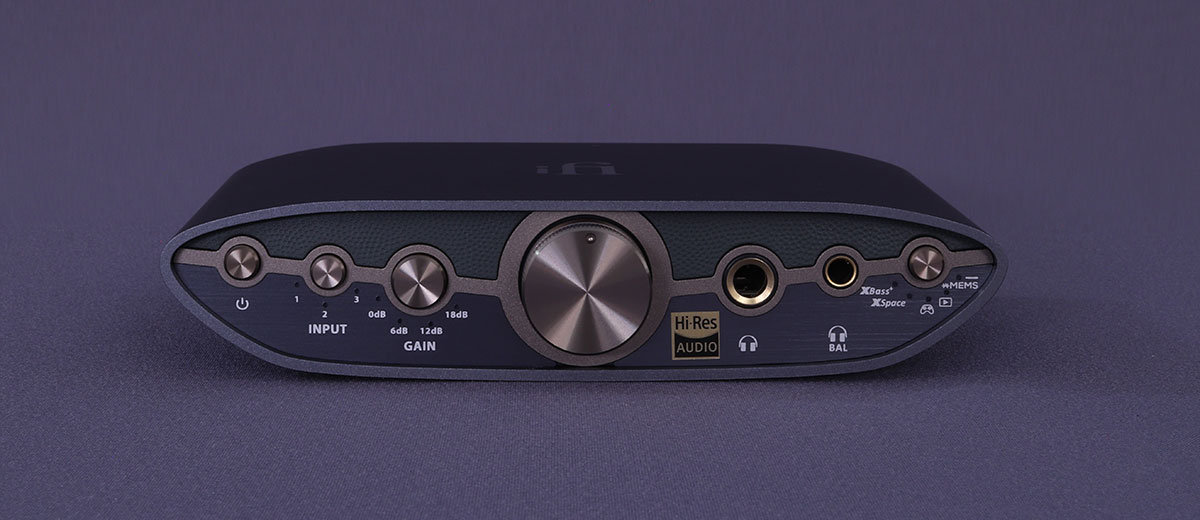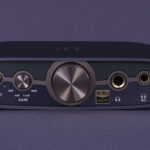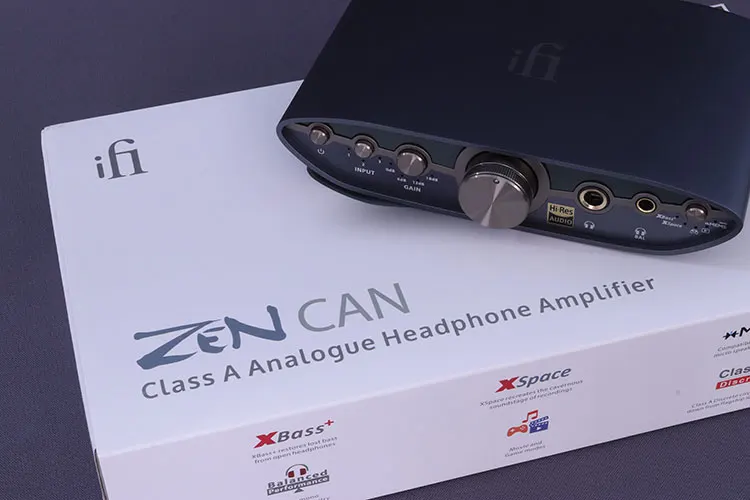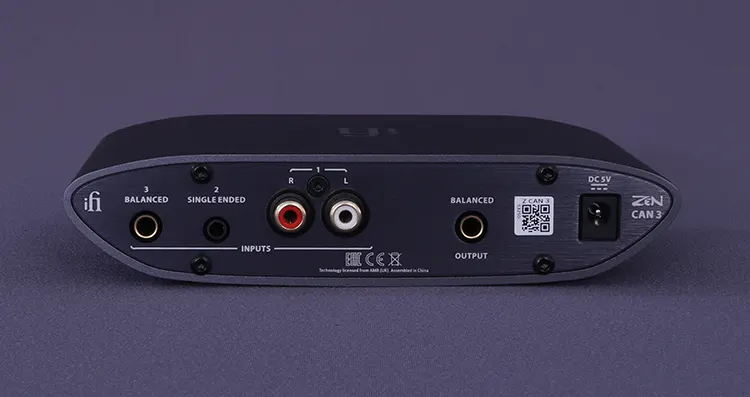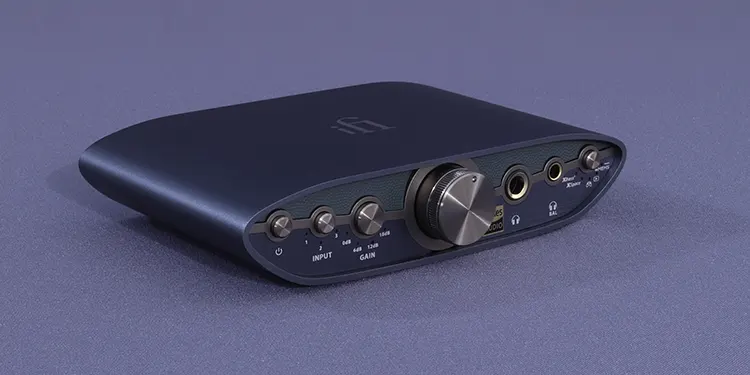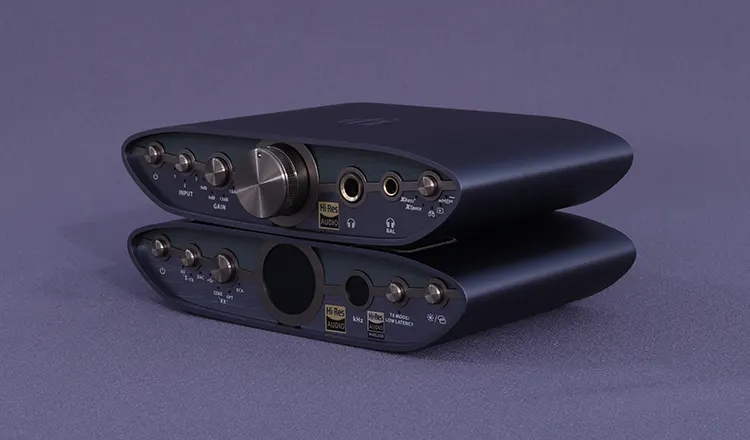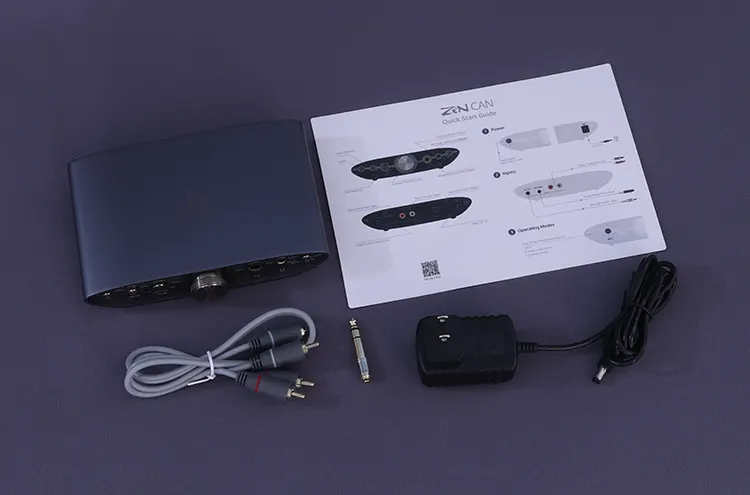In this feature, Louis reviews the iFi Audio ZEN CAN 3, a $229.00 xMEMS-based compact desktop headphone amplifier with up to 2W of balanced output power.
Disclaimer: I received this sample in exchange for my honest opinion. Headfonics is an independent website with no affiliate links or services. I thank iFi Audio for their support.
More information about iFi Audio products we have previously reviewed on Headfonics can be found here.
This post adheres to our current scoring guidelines, which you can find here.
The iFi Audio ZEN CAN is a popular headphone amplifier that has received more than a few updates.
There have been many variant releases of the ZEN CAN like the Signature 6XX, the MZ99, and the Signature HFM variants but none have been packed with as many features as the new ZEN CAN 3.
The new ZEN CAN 3 has received xMEMS driving capability and it seems to be the most economical way to go if you want to drive such xMEMS gear. It also gained some sound tuning features not found on any other ZEN CAN.
Features
The first novel feature of the iFi Audio ZEN CAN 3 is that it comes equipped with two selectable sonic profiles that seem to have been further refined from the iFi Audio UNO.
The ZEN CAN 3 only has two of the three presets incorporated into the UNO but it offers a couple of other features that place it above the UNO in features.
The two included sonic presets are labeled movie mode and gaming mode. The gaming mode preset enhances details and brings them forward, allowing you to focus on footsteps, voices, and the whisp of bullets flying by. The movie preset enhances vocals but I preferred the flat setting, to be honest.
The XBass+ and XSpace features are also included and I don’t know which one I like the most. The XSpace widens the soundstage size without compromising the placement precision or focus. It’s a subtle but effective effect. The XBass+ is a tastefully done bass boost as you already know.
The novelty here is that iFi claims that all these implementations are done at an analog level and are not digitally implemented as in DSP.
For example, I feel that the XBass+ seems similar to the long-gone old loudness button but without the treble increase. It’s a subtle, tastefully done sub-bass elevation.
Amplification
The ZEN CAN line uses a class-A type variation of amplification. It’s what iFi calls a trickle-down class-A discrete balanced circuitry. Most of their amplifiers use a similar circuitry structure and it seems they’re slowly improving the platform.
The components responsible for the headphone output power come from what seems to be ten of their custom “Operationsverstarker” OV series OP amplifier opamps mounted close to the output ports and the volume control.
The ZEN CAN 3 output power is increased by a pinch with a maximum output of 2W, compared to the 1890mW balanced output capability of the previous ZEN CAN variants.
The overall running temperature of this model doesn’t exceed what I would call a warm running temperature and it seems to be a thermally-sound device that doesn’t produce excessive heat which is ideal for long desktop sessions.
Design
The rounded trapezoid shape is an iFi insignia design and it seems it’s here to stay within the ZEN line but I don’t mind that. It doesn’t match up aesthetically to any other component out there but you can’t say it doesn’t have unique appeal either, because it does.
The ZEN CAN 3 did gain some visual cues on the front panel that distinguishes it from the previous series versions.
The front panel is split into two distinct visual sections with the top split finished with a leather-type material now, but to the touch, it seems to be made from a polymer.
The buttons are made from metal including the volume knob which has fine knurling alongside the outer edge. The buttons don’t rattle as the first ZEN CANs buttons did and it seems iFi tightened up the design behind those buttons.
The ZEN CAN 3 volume knob is analog and it feels smooth and doesn’t produce too much channel imbalance on this model, another area that iFi is slowly improving on. I just wished that iFi would color that dimple indicator on the volume knob for better visibility.
The input ports consist of three selectable inputs with LED indicators via the front panel input selector. There’s a set of RCA inputs, a 3.5mm, and a 4.4mm balanced output.
The front panel IO consists of a single-ended, full-size 6.35mm port and a 4.4mm balanced connector. Previous iFi Audio offerings sometimes have 4.4mm ports that can feel ‘crunchy’ when you insert the 4.4mm plug but this one seems perfectly smooth.
Controls
The multifunction momentary push button upfront on the right-hand side of the ZEN CAN 3 front panel is a fully-featured button the likes I’ve not seen from iFi Audio, except for the multifunction volume knob on the xDSD Gryphon.
This button lets the user select between XBass+, XSpace, Gaming, and Music modes. It also selects the xMEMS feature which will engage on a 2-second hold if you want to use it with an xMEMS IEM.
You can select XSpace and XBass+ simultaneously, but the gaming and music modes only engage independently and don’t work in conjunction with the other sound-shaping features.
The left-hand side of the front panel houses three momentary push buttons. The first one on the left is the power button. Then you have a 3-input selector alongside a 4-way gain selector.
Packaging & Accessories
The overall packaging and materials of the ZEN CAN 3 are the same as previous versions with recycled materials. The amplifier sits inside a pulp cradle and the accessories are packed in a separate smaller white box.
I was expecting to find an iFi Audio power brick inside but sadly, only a very generic, small power adapter was included.
I also found a 2-foot RCA cable and a 3.5mm to 6.35mm headphone adapter. The rest of the contents consist of a quick-start guide, some legal pamphlets, and the customary iFi Audio sticker.
Sound Impressions
The following sound impressions of the ZEN CAN 3 were completed using a HIFIMAN Sundara and the HE400se on a MEZE Audio MONO silver-plated upgraded cable with 4.4mm connectivity. I also used MEZE Audio’s 99 Classics and Sennheiser’s HD 490 PRO Plus with stock cables.
I also tested the ZEN CAN 3 with FiiO’s FA19, their FH19, plus the HIFIMAN Svanar on the 6.35mm side with iFi’s included adapter.
I fed the amplifier with the RCA outputs of the ZEN ONE using their included iFi branded RCA cables and the SMSL SU-X off the XLR using iFi’s 4.4mm to XLR balanced cable.
Summary
Not much has changed in tonality here from other previously released ZEN CAN variants. You still get that class-A warm, analog sonic character typical of the iFi line along with a clean background and a punchy character.
Most of the changes in the ZEN CAN 3 performance seem to have taken place in a noise floor that subjectively sounds like it has been lowered. This allows more detail to come through and for the ZEN CAN 3 to produce a cleaner sonic presentation, compared to the rest of the series.
The frequency response seems to favor the lower portion and midrange portion of the sonic spectrum. However, its full spectrum extends beyond human hearing and is evenly produced.
The mids are rich and the highs are produced in a relatively relaxed manner. The high frequencies are well pronounced, more so compared to the other ZEN CAN variants but the warm character in general is still there.
Staging & Dynamics
The iFi Audio ZEN CAN 3 kicks pretty hard when it has to, especially with the XBass+ engaged which brings forth a bass response to the point where you can feel the bass presence in a slightly increased manner.
The soundstage follows suit because when whatever you’re listening to lacks air and expansion, the XSpace comes to the rescue with a small increase in width and height. It doesn’t seem to improve or increase depth but you get what is in the source and is not reduced by any means.
When the XSpace is engaged, you do not lose any of the focus which is of concern when using DSP expansion. Elements seem to remain well-positioned and in general, don’t lose center, Nor does anything sound off-axis.
Click on page 2 below for my recommended pairings and selected comparisons.

